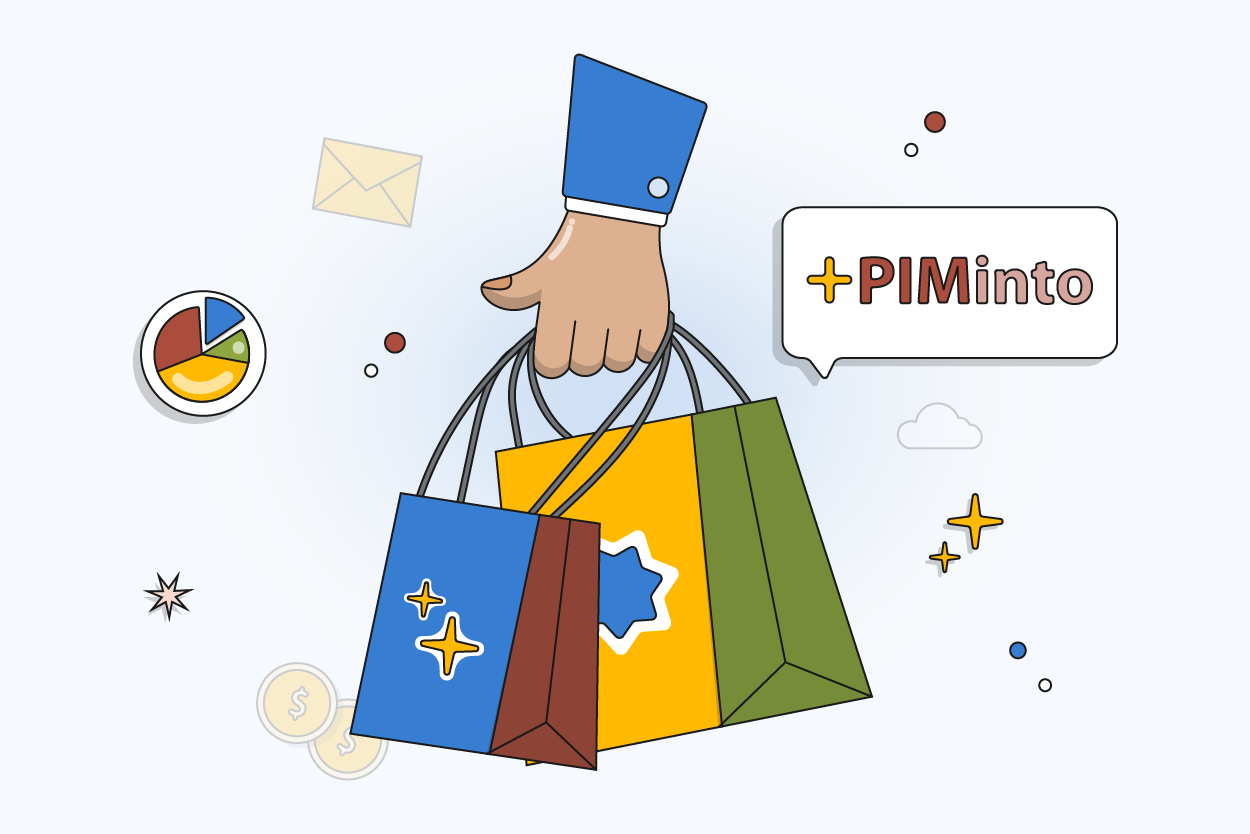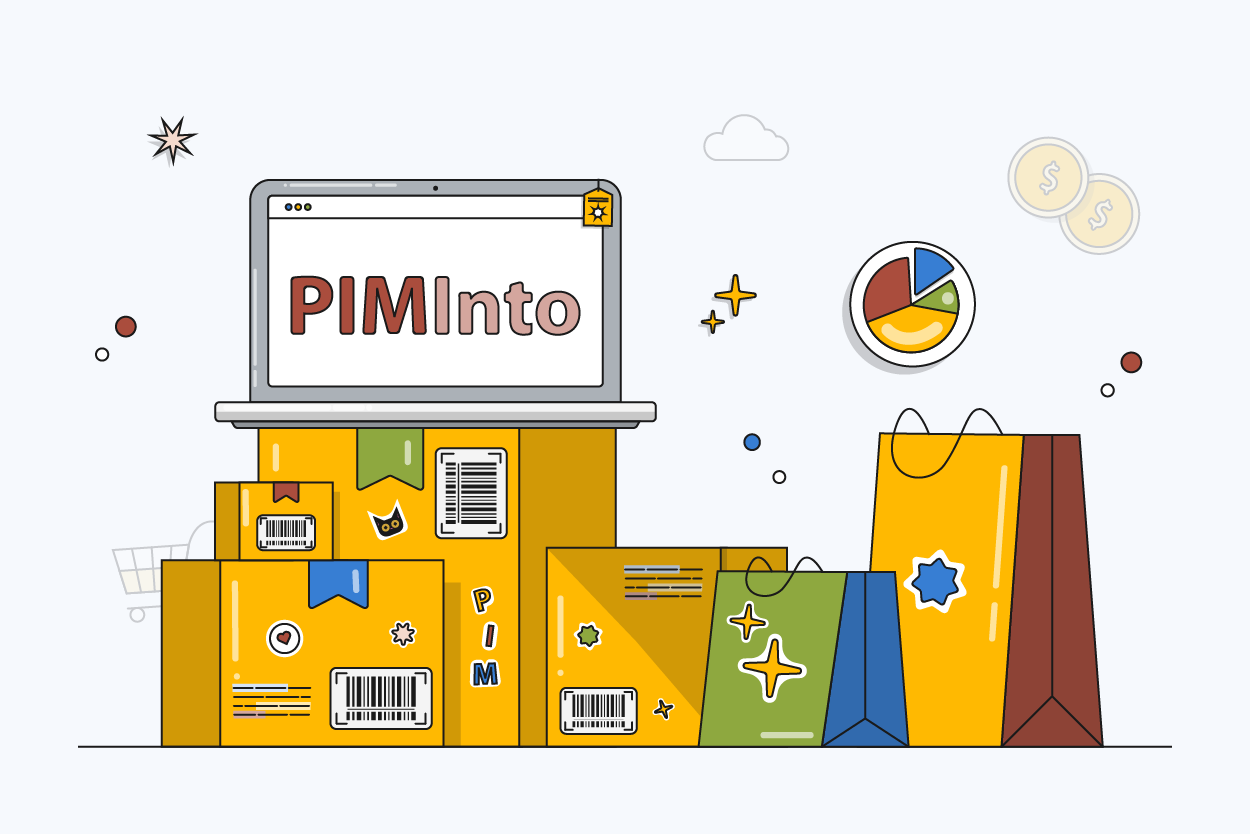
Use PIM to improve your business performance. Learn how to manage product data to enhance customer experience and increase sales!
The e-commerce industry helps businesses to offer more products. It allows businesses to reach more customers. It keeps stores open all day and all night.
In 2024, experts think that 20.8% of retail purchases will happen online. This online market is very competitive.
To succeed, businesses must follow new trends closely. One important trend is omnichannel digital distribution. This strategy uses different sales channels together. It helps to give good customer service. Businesses can use Product Information Management systems to do this well. This article will explore the role of PIM in omnichannel marketing. Learn more about Product Information Management systems here.
E-commerce Market Overview
Shoppers do not go to local malls as much as they did before. Many customers find businesses online now. They visit digital stores or social media pages often. Entrepreneurs want to start new businesses with low cost. Renting physical stores is not the main focus now. They want to create online presence to get more sales.
It is easy to start a digital business. Free website builders help starts this process. The e-commerce market grow very fast in the past ten years. Technology changes and consumer habits drive this grow. The shift to digital platforms makes it very important for businesses to adapt and grow.
Forbes say that in 2023, 20.8% of retail purchases happen online. The global e-commerce market will be worth $6.3 trillion.
Omnichannel Approach in E-commerce
Digital marketing use technology and online channels to promote products, services, or brands. This helps to improve presence and raise brand awareness. It increase website traffic and get new leads. Digital marketing connects with consumers and send targeted messages through websites, search engines, social networks, email, and mobile apps.
In the past, e-commerce strategies follow only one channel. They focused on saving resources either online or offline. This method cause bad customer experiences and missed chances. Competition in e-commerce push businesses to improve their marketing strategies. Now, in 2024, the omnichannel approach is more important.
Omnichannel marketing go beyond the limits of traditional marketing. It gives a complete view of the customer journey across many platforms. This approach helps to keep the same experience for the products. The customer shops online. The customer can use desktop or mobile device. The customer can also shop in a store.
Benefits of Omnichannel Marketing
Improving the Customer Journey. Omnichannel marketing gives a smooth shopping experience. It connects many ways to shop, such as online stores, mobile apps, and physical shops. This method makes shopping easier and better for customers. Customers can browse, compare, and buy products easily on different platforms. By creating a full journey, businesses can meet customer needs at every step. This step is from finding products to buying them and more. This leads to a more enjoyable shopping experience.
Improved Customer Retention. A single omnichannel plan help to keep customers. It does this by giving consistent and personal contact. When businesses offer the same experience everywhere, they can make stronger bonds with customers. This contact builds trust and loyalty. Customers feel that businesses understand and appreciate them. The easy and familiar shopping experience encourages customers to come back. This action increases repeat purchases and long-term loyalty.
Brand Consistency and Responsibility. Omnichannel plans make sure the brand’s message, values, and looks are the same everywhere. This sameness makes the brand easier to recognize and trust. It also shows care for what customers need and want. A united brand message shows understanding of customer expectations from different places. The same branding everywhere improves how customers see the brand. It also makes customer relationships stronger.
Increased Revenue and Customer Lifetime Value. Better customer experiences from omnichannel plans lead to more loyalty and spending. A good omnichannel plan can raise customer happiness. This change often leads to more sales and bigger average orders. Also, loyal customers usually buy again, which raises their value to the business. By giving a connected and personal experience, businesses can get customers to buy more often. This step builds a loyal customer group that helps long-term income development.
The omnichannel approach in e-commerce shows a big change. It is a change from traditional marketing strategies. These strategies focus on one channel. The omnichannel approach looks at the whole view. It connects different customer touchpoints. This connection makes brand experiences consistent. Customers have the same experience online and offline. This approach improves the customer journey. It also helps retain customers. Brand consistency gets better too. These factors lead to more customer loyalty. They also help increase revenue. By the year 2024, companies need omnichannel strategies. These strategies make marketing efforts better.
Role of PIM
To make good buying choices, customers need clear information about products or services. They also need good digital materials. When looking at many offers or managing different products, sales team members have to work with a lot of different data. Updating and sharing this data can be complicated, so only a special PIM solution can do this job well.
To build a good omnichannel plan, it is very important to share information with the right teams and customers. For example, your customer service team needs product data to help customers who have questions. You can also make workflows that help your live chat with product information, which helps your online business. Here are some features of PIM in an omnichannel plan.
Features of PIM in an omnichannel plan
- Centralization of Product Information. PIM is a main place for all information about products. This centralization makes data management easier and keeps information correct. When businesses have a single place for product details, they can update and manage information easily, which reduces mistakes. This is very important for big inventories where it is hard to manage many details.
- Sharing of Product Data Across All Channels. PIM makes sure that correct product information is shared across all sales channels. This includes online shops, company websites, social media, and offline stores. By sharing the same product data, PIM helps keep the brand consistent and reliable. This is very important for building trust and loyalty among customers. When information is accurate across all platforms, it makes the customer experience better and avoids confusion.
- Management of Different Assortments. PIM helps businesses create their product collections for different channels. It meets the specific requirements of each channel. It also meets the expectations of customers. This flexibility is very important. It addresses the unique needs of different customer groups. By managing different assortments well, businesses can improve their product offerings. This improvement makes the products more relevant for different audiences.
PIM makes sure businesses follow the rules of each channel. Each channel has its own standards for product information. These standards may include image sizes and description formats.
PIM systems assist businesses in following these guidelines. It helps ensure that product listings are consistent. It also makes them optimized for each channel. This compliance is very important. It helps maintain a good status on different platforms. It also helps to maximize the visibility of digital assets. It increases the effectiveness of product listings. In this way, digital asset management look very important. Asset management must be done carefully but also in order.

Benefits of PIM for Omnichannel Marketing
- Growth of Digital Sales. PIM makes it easier to update and manage product listings. This helps online sales a lot. PIM simplifies the management of product information. Businesses can make sure their products are easy to find online. This efficiency helps in faster updates. It also improves visibility. These things increase digital sales.
- Gaining Customer Trust. Accurate product information builds consumer trust. PIM systems make sure that all product data is the same on different channels. This uniformity helps consumers trust the brand. Customers can expect the same information everywhere.
- Cleaning the Data Pipeline. PIM reduces errors in product data. It centralizes information management. This minimizes discrepancies in the information. A cleaner data pipeline is important for product information. It helps SEO teams a lot.
- Demonstrating a Compelling and Consistent Product Experience. PIM improves brand perception. It ensures the same product story is told on all channels. This helps create a strong product experience. It makes the brand identity and values clearer.
- Accelerating Sales. PIM speeds up the process of selling products. It allows fast updates to product information. This helps businesses respond quickly to market changes and consumer demands.
- Sales Scaling. A business grows and so does its product range. PIM helps scale these product offerings efficiently. PIM helps businesses manage many products easily. PIM makes sure that businesses can grow their products without losing quality.
The role of PIM in e-commerce
The role of PIM in e-commerce is very important. PIM helps with the challenges from modern consumer needs. PIM helps with different sales channels. PIM shares detailed product information in a central place. PIM helps brand consistency and builds customer trust.
PIM improves the customer experience. It gives reliable and uniform product data. This data is important for better digital sales growth. PIM reduces errors in data management. PIM helps meet different requirements for various sales platforms.
PIM can manage many product options. PIM makes the process of getting products to market faster. This is important for increasing sales. PIM helps to keep brand integrity in the changing digital marketplace.
Conclusions
PIM is important for success in e-commerce. It helps with omnichannel strategies. By managing and sharing product information well, businesses can create a good customer experience. This can lead to more sales and customer loyalty. The e-commerce market is always changing. Integrating PIM systems is essential. This is for businesses that want to succeed.
Was this news helpful?







 Yes, great stuff!
Yes, great stuff! I’m not sure
I’m not sure No, doesn’t relate
No, doesn’t relate



